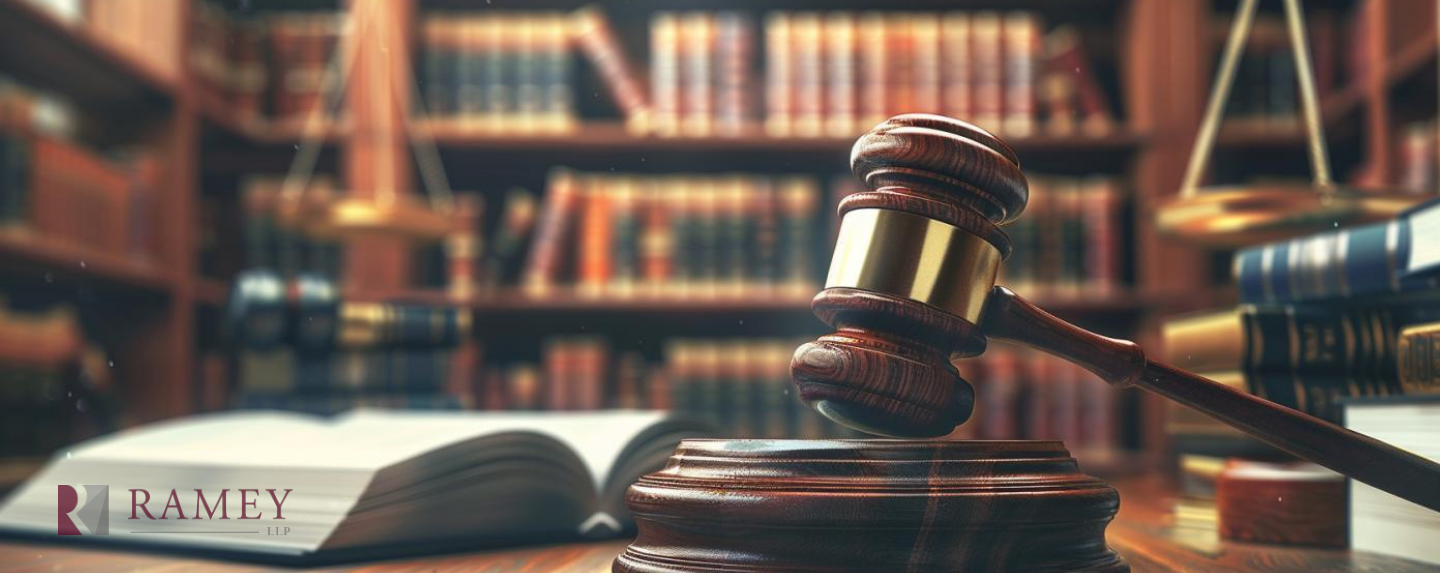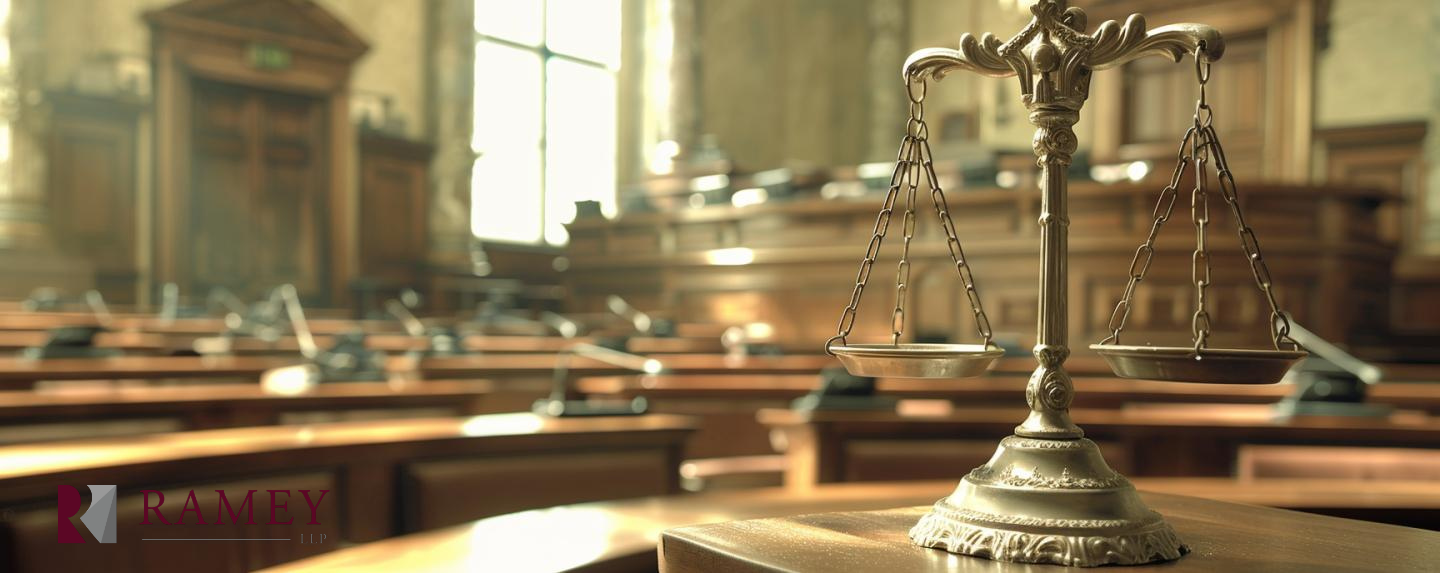An Overview of Patent Infringement and Defenses Against It
An Overview of Patent Infringement and Defenses Against It

In a world where innovation is the lifeblood of many businesses, the protection of inventions is crucial. This protection often comes in the form of a patent, which grants the inventor exclusive rights to their invention for a limited period.
However, the road to innovation is riddled with obstacles, one of the most challenging being the issue of patent infringement.
Patents play a vital role in granting inventors the exclusive rights to manage and commercialize their innovations, whether it's a groundbreaking device or a unique procedure.
With Ramey LLP, you can trust that your patents are strengthened against competitors, from utility patents safeguarding functional elements to design patents protecting aesthetics.
Patent Infringement in the Modern Context
Patent Infringement cases issues arise when a party, whether knowingly or not, uses, sells, or makes a patent claims, item, or design without the permission of the patent owner.
Direct Infringement: This is the most overt form of infringement, where the infringing party uses, sells, or makes the patented invention without consent.
Contributory Infringement: This occurs when a party knowingly provides a component or material that is specifically designed or adapted for use in a patented invention without the patent holder's consent.
Alleged Infringement: The patent infringement process starts with an allegation by the patent holder. Detailed analysis of the product/process is done to compare with patent claims. Evidence documentation is crucial for potential legal actions.
Indirect Infringement: Indirect patent infringement is more complex than direct infringement, involving a secondary party contributing to or inducing the infringement.
Indirect infringement in patent law consists of contributory infringement and induced infringement, each based on the level of involvement and intention of the secondary party. Navigating these complex scenarios requires rigorous protection and expert legal counsel.
The Ramifications of Patent Infringement
The consequences of patent infringement claims can be devastating, financially and legally. patent lawsuits can result in hefty fines, ongoing royalty payments, and injunctions that prevent further production or sale of the infringing act.
The process itself is not only financially costly but can also take a significant toll on a company's resources and time, often resulting in a diverted focus from core business activities. The process of claim interpretation is often the most contentious part of patent litigation.
Proving ownership of a valid patented product is a foundational step in any patent infringement case. This involves substantiating that the patent in question legally belongs to the plaintiff and that it is currently valid.
The plaintiff must present the original patent documentation issued by the United States Patent and Trademark Office (USPTO) or the corresponding authority in other jurisdictions.
This documentation must clearly detail the scope and claims of the patent, establishing the inventor's exclusive rights to the invention.
Additionally, it is essential to demonstrate that the patent has not expired, been revoked, or lapsed due to non-payment of maintenance fees. Establishing clear and undisputed patent ownership is crucial, as it forms the basis of legal standing for the patent holder to pursue infringement claims.
Our Intellectual Property Transactional Practice
At Ramey LLP, our intellectual property transactional practice is comprehensive and meticulously tailored to safeguard the innovative output of our clients. Our services extend across various domains of intellectual property rights, ensuring robust protection and management of inventions. Below are the key areas we specialize in:
- Design Patents: We assist clients in protecting the aesthetic aspects of their products. Our expertise includes navigating the intricacies of obtaining design patents that cover the visual non-functional elements of items, ensuring their unique appearance is legally protected.
- International Patents: With the globalization of markets, securing patent protection internationally has become imperative. Our team is well-versed in the procedures and strategies for securing patents across multiple jurisdictions, ensuring our clients' inventions are protected worldwide.
- Plant Patents: We provide specialized services for securing patents on new and distinctive plant varieties. Our expertise includes assisting clients through the complex process of obtaining plant patents, which is essential for the agriculture and horticulture industries.
- Utility Patent: Our core practice includes securing utility patents for clients, which protect the functional aspects of their inventions. This encompasses a wide range of inventions, from processes and machines to manufactures and compositions of matter.
Navigating the Patent Application Process requires precision, thorough documentation, and an in-depth understanding of both the invention and applicable laws.
The first step involves conducting a comprehensive patent search to ensure that the invention is indeed novel and not already patented. This research is crucial to avoid infringement and to tailor the application to emphasize the unique aspects of the invention.
Following the search, preparing and submitting the patent application becomes the focus, which includes detailed descriptions of the invention, claims that define the scope of the patent protection sought, and, if necessary, drawings that illustrate the invention.
At Ramey LLP, we guide our clients through each step of this intricate process, leveraging our expertise to optimize the strength and breadth of the patent protection achieved.
Conclusion
Considering the complex nature of patent law and the potentially severe consequences of infringement, consulting with an intellectual property (IP) lawyer is highly recommended for both patent holders and those accused of infringement. An experienced IP lawyer can provide invaluable guidance on navigating the intricacies of patent protection, enforcement, and defense strategies.
Whether you are seeking to protect your innovations, facing allegations of infringement, or dealing with any challenges related to patents, the specialized knowledge and expertise of a patent attorney are essential resources for securing your intellectual property rights and interests.
For legal consultation on patents and intellectual property matters, reach out to professional legal firms with a track record of excellence in the field. It is only through rigorous legal guidance and strategic foresight that businesses can continue to push the boundaries of innovation without falling afoul of patent laws.



Contact Us
Contact Us
We will get back to you as soon as possible
Please try again later

